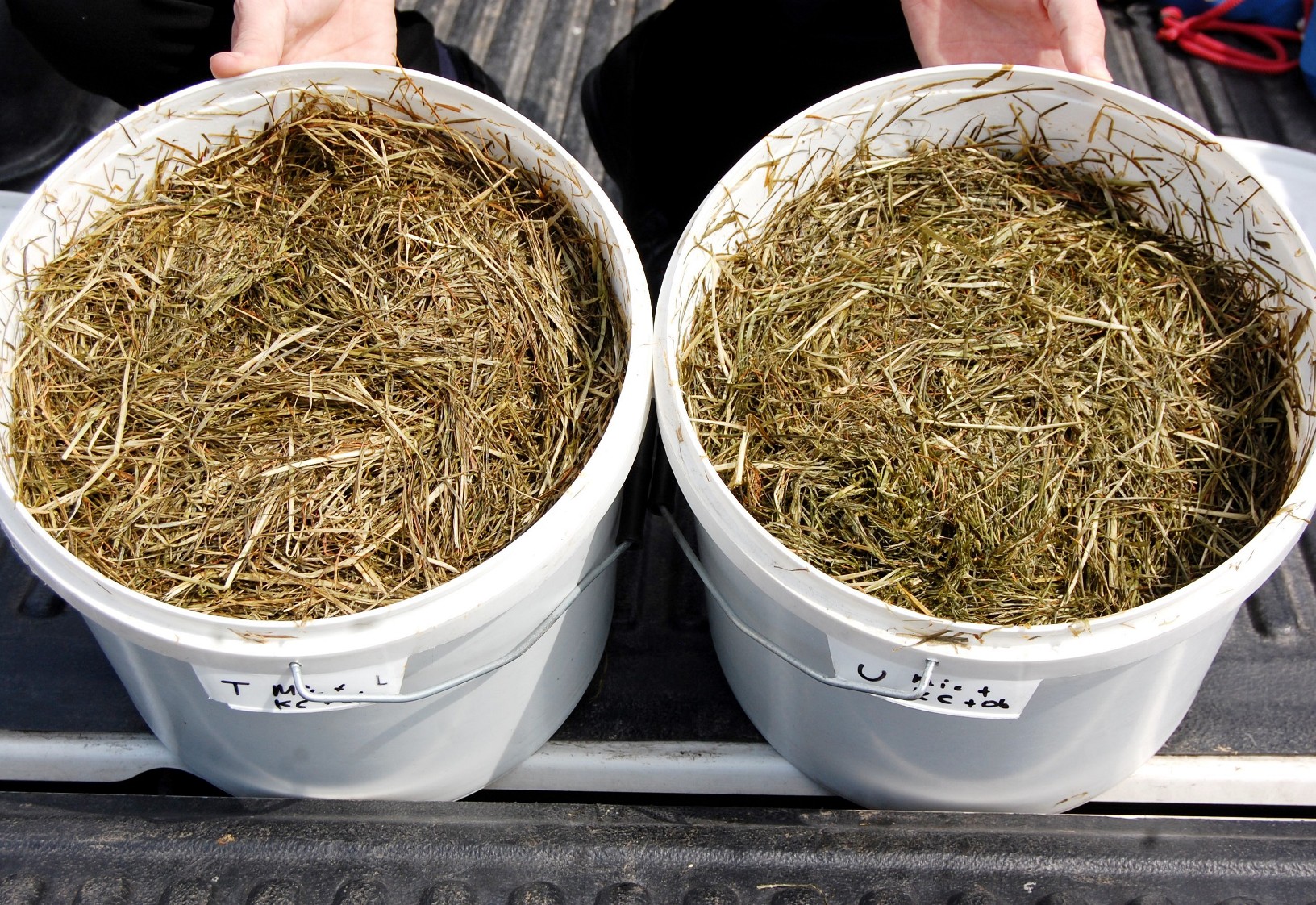Farmers are being advised not to over wilt grass prior to ensiling during the current dry spell. Grass samples taken by Provita directly after cutting this week, and thereafter, following an 18 hour, 24 hour and 48 hour wilt have confirmed that dry matter values can increase dramatically if grass is left to wilt beyond a 24 hour period.
“Freshly cut grass samples had average dry maters of between 18 and 20%”, confirmed Provita’s Tommy Armstrong.
“This rose to a figure in the mid-twenties after a 24 hour wilt, and rose again to 40% when grass was left in the field for a further day.”
He continued:
“These figures were derived from grass samples taken in a range of different locations right across Northern Ireland. As a result, they are reflective of the silage making conditions encountered on most local farms.
“It is difficult to get forages with dry matters in excess of 30% to compact properly. In the first instance, it is more challenging to achieve proper compaction within the clamp. Problems can also arise at feed out with heating and excessive spoilage.”
Armstrong confirmed that dry matter values of around 25% are optimal when it comes to maximising silage quality.
“Grass should be rolled thoroughly as it goes into the clamp,” he said.
“Many contractors will be under pressure to take advantage of this good weather. Therefore farmers should use an additional tractor to roll the clamp, in order to get the required degree of compaction.
“In instances when silage making carries on into a second day, the clamp should have a light cover placed over it at the end of the first evening.
“Once work gets underway the next morning, rolling should only continue once the first batch of fresh grass has been put on top of the clamp. Rolling directly on top of the silage made the previous day will only spoil it. If steam is coming out, air is going in.”
Armstrong also confirmed that ME values are now dropping off quickly.
“Over the last week grass ME values have fallen from around 11.0% to 10.5%,” he confirmed.
“However grass swards in the west are not as advanced because of the cooler conditions. As a means of counteracting the drop-off in ME values, farmers making silage over the coming days can opt to wilt prior to putting grass in the clamp.”
The Provita representative also pointed out that using the company’s Advance+ inoculant will ensure a better fermentation, plus improved stability and less spoilage at feed out.
“Independent trial results submitted to the EU silage additive registration system showed a doubling of the stability time at feed out,” he concluded.
